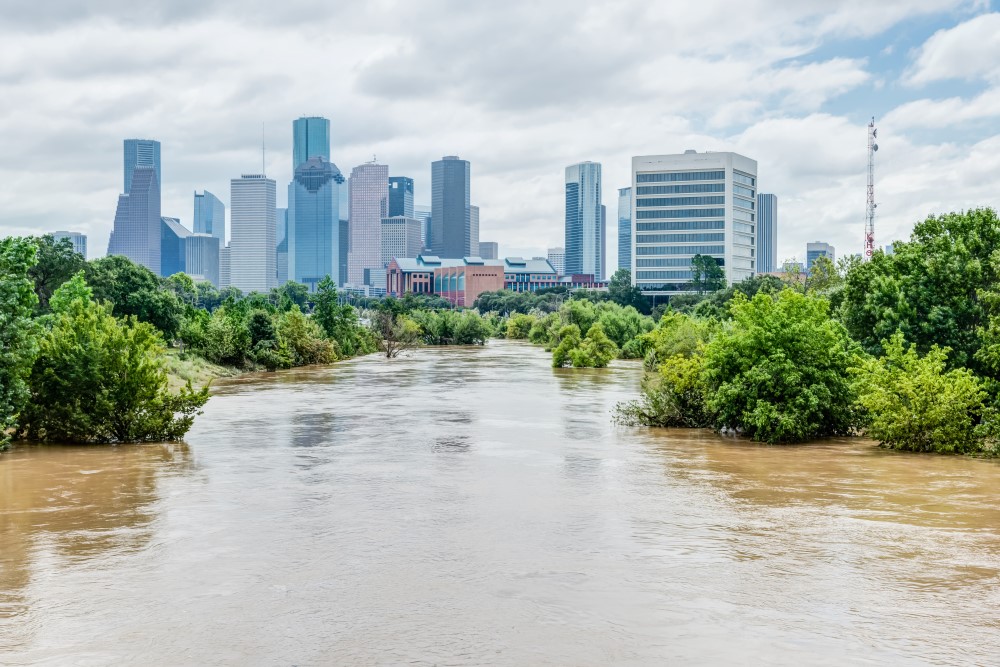Explainer: the climate science behind cold snaps

The Met Office has warned that freezing cold temperatures could grip the UK in March due to a late winter cold snap. Extreme cold weather in the US hit the headlines earlier this year, with two extreme storms over six weeks in New York. Buffalo recorded its snowiest calendar year and winter season from 2022-2023. And last December, even Texas scrambled with white-out conditions.
It wasn’t only the strong winds and vast amounts of snow that were unanticipated, the plummeting temperatures over just a few hours were startling. High winds and blizzard-like conditions led to the closure of a 200-mile stretch of Interstate 90, which crosses much of the northern tier of the United States. A further 16,000 flights were canceled or delayed and power grids were pushed to their limits, leaving thousands stranded without electricity. Are extreme cold snaps becoming more frequent and more severe and what does that mean for communities and organizations?
These types of cold snaps are dangerous – life-threateningly so for some – and wreak absolute havoc on daily life. Cold climate events are a threat to humans and ecosystems. We look at cold snaps and uncover the climate science behind them.
Climate change and extreme cold events
With 2022 being one of the 10 hottest years and despite a record La Niña year, these severe cold events may not seem to fit with the global warming trend. However, global warming does not just mean warming all over the globe, during all seasons – some areas can experience colder temperature extremes.
As for the winter in North America, uncertainties still exist as to whether there will be colder extremes in a warmer world, and this topic is still under debate among scientists. With this in mind, here are a few possible reasons why climate change could have made the recent cold snaps occur or be more extreme.
The disruption of the polar vortex
The polar vortex, a spinning cold air mass located near the poles, is the main actor in this event. In a New York Times article, the National Weather Service describes the polar vortex as “a large area of low pressure and cold air surrounding both of the Earth’s poles. It always exists near the poles, but weakens in summer and strengthens in winter. The term ‘vortex’ refers to the counterclockwise flow of air that helps keep the colder air near the poles.”
In its stable state, the polar vortex stays above the pole and does not reach southwards. But sometimes, the polar vortex is disrupted, and the polar jet stream – the delimiter of the polar vortex – becomes wavy, allowing the cold air masses to plunge southwards.
During Christmas 2022, the polar jet stream made an extreme dive southward, triggering what some newspapers called a “Once-in-a-generation winter storm.” The collision between the cold Arctic air and warm, moist air masses resulted in strong winds and significant snowfall. This snowfall was intensified by the so-called ‘lake effect’, which brought extreme accumulation close to the Great Lakes region.
Some scientific studies such as a 2018 study by Judah Cohen, Karl Pfeiffer & Jennifer A. Francis, Warm Arctic episodes linked with increased frequency of extreme winter weather in the United States, point to more recurrent disruptions of the polar vortex in a warmer world, leading to more frequent cold snaps above North America – stemming from the warming of the Arctic. This topic is currently being investigated by scientists and is still under debate.
Increased water vapor
As the world becomes warmer, the atmosphere carries more water vapor. This means that when a warm, moist air mass meets a cold one, larger precipitation accumulations are likely to be the result.
Warmer lakes
On a warmer planet, with hotter summers, lakes are very likely to be warmer than they currently are. This implies an intensification of the lake-effect leading to increased snow accumulations.
How cold snaps impact organizations and communities
We also saw how a warmer world can still bring serious cold snap chaos during the previous 2021 Texas winter storm. As storm Uri and recent events have shown us, severe cold events can critically impact communities and organizations. It caused hundreds of deaths, health threats, major disruption to organizations, and billions of dollars of damages.
It’s described in How unprecedented was the February 2021 Texas cold snap? (James Doss-Gollin et al, Harvard University): “Winter storm Uri brought severe cold to the southern United States in February 2021, causing a cascading failure of interdependent systems in Texas where infrastructure was not adequately prepared for such cold. In particular, the failure of interconnected energy systems restricted electricity supply just as demand for heating spiked, leaving millions of Texans without heat or electricity, many for several days.”
Climate change is having multiple impacts and may even have been responsible for an increased occurrence of colder extremes, something that can be seen as counter intuitive. With our climate growing increasingly volatile, how can companies ensure they are robust throughout climate change? By investing in valuable climate intelligence (CI).
Organizations need to adapt their assets to make them more resilient in the face of cold snaps, extreme temperatures, and climate-driven events. Informed by on-demand, science-backed and decision-useful climate intelligence, stakeholders can climate-align every decision, leading to the most effective adaptation measures.
To stay up-to-date with the latest insights from our climate scientists, subscribe to our newsletter.
Share this article
Our latest news and insights

Accenture and Cervest collaborate to bring innovative solutions to clients seeking resilience amid increased climate risk
Read more
What is climate intelligence and why do businesses and governments need it?
Read more
